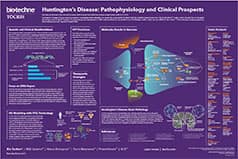Indoleamine 2,3 dioxygenase
Indoleamine 2,3 dioxygenase (IDO, EC 1.13.11.17) is a 45 kDa monomeric, heme-containing oxidoreductase which catalyzes the rate-limiting first step of the kynurenine pathway; the oxidative cleavage of L-tryptophan (L-Trp) into N-formyl-kynurenine (Nfk).
Indoleamine 2,3 dioxygenase Inhibitors |
|
|---|---|
| Cat. No. | 产品名称/活性 |
| 6007 | INCB 024360-analog |
| Potent indoleamine 2,3-dioxygenase (IDO) inhibitor | |
| 5698 | 1-Methyl-D-tryptophan |
| Indoleamine 2,3-dioxygenase (IDO) inhibitor | |
Indoleamine 2,3 dioxygenase (IDO, EC 1.13.11.17) is a 45 kDa monomeric, heme-containing oxidoreductase which catalyzes the rate-limiting first step of the kynurenine pathway; the oxidative cleavage of L-tryptophan (L-Trp) into N-formyl-kynurenine (Nfk).
IDO, and the kynurenine pathway, are induced in response to several pro-inflammatory stimuli, especially IFN-γ, which leads to the production of L-Trp metabolites and the resultant depletion of L-Trp from tissues. This occurs in most tissue types, where IDO is found, but not in the liver where the cleavage of L-Trp is catalyzed by tryptophan 2,3 dioxygenase (TDO).
The enzymatic activity of IDO is dependent upon the presence of a heme group, situated between the enzyme's two α-helical domains, and the reduction of its Fe atom to the ferrous state. This allows binding of both L-Trp and O2 to the active site.
Many kynurenine pathway intermediates are neuroactive or have immune-regulating properties so IDO activity is linked to a variety of diseases. Increased levels of quinolic acid, an L-Trp metabolite that can activate NMDA receptors, has been linked to neurodegenerative disorders, such as Huntington's disease and Alzheimer's disease, as well as anxiety, depression and epilepsy.
As well as being linked to cardiovascular disease and inflammation, IDO is also a target of interest in cancer due to the immunosuppressive effects caused by its induction. Although the depletion of L-Trp caused by IDO can slow tumor growth, it also inactivates T-cells and allows tumors to evade the immune system.
External sources of pharmacological information for Indoleamine 2,3 dioxygenase :
Literature for Indoleamine 2,3 dioxygenase
Tocris offers the following scientific literature for Indoleamine 2,3 dioxygenase to showcase our products. We invite you to request* your copy today!
*Please note that Tocris will only send literature to established scientific business / institute addresses.
Cancer Metabolism Poster
This poster summarizes the main metabolic pathways in cancer cells and highlights potential targets for cancer therapeutics. Genetic changes and epigenetic modifications in cancer cells alter the regulation of cellular metabolic pathways providing potential cancer therapeutic targets.
Huntington's Disease Poster
Huntington's disease (HD) is a severe monogenic neurodegenerative disorder, which is characterized by the prevalent loss of GABAergic medium spiny neurons (MSN) in the striatum. This poster summarizes the effects of mutant huntingtin aggregation implicated in the pathology of HD, as well as highlighting the use of iPSCs for HD modeling.


